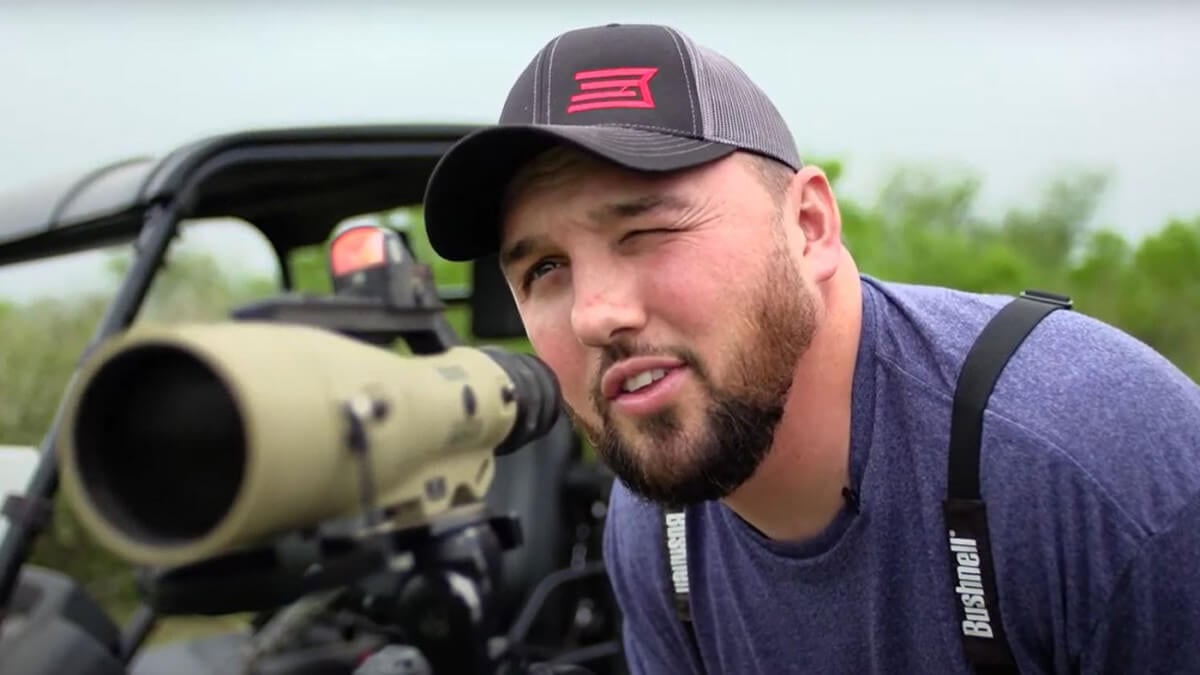- Savage Blog
- Scouting for Deer in Midsummer Techniques
Scouting for Deer in Midsummer Techniques

For any serious hunter, deer season is not just a few short weeks in the fall. It's a year long process. Scouting for deer in midsummer is an important tactic in order to learn and observe the local deer long before the weather cools off and it's time to head to your stand. Savage ambassador and host of "Savage Outdoors" and "The One", Mike Stroff has multiple techniques for scouting deer in midsummer that will help you fill your tag and fill your freezer this fall.
Bino Bucks
When hunting, many of us (especially Easterners) tend to head into the field with more compact, lightweight binoculars in the 8-power range. But when scouting around large food plots in the off season, Stroff recommends a different approach. If you're scouting an area large enough to require a spotting scope, investing in a good pair of 10-power or 12-power binos can help keep your required gear to a minimum on scouting trips.
Glassing with a Red Dot
If you're scouting over a large destination food source or your trip is going to require a little more magnification than a pair of binos, Stroff shares a great hack on how he glasses with a spotting scope. He has a red dot mounted to his spotting scope to easily locate what he wants to see through his spotting scope. "I can look at the red dot, move it to get it on position of what I want to look at, and when I look through the scope, I'm right on it," says Stroff. This tip will make using your spotting scope a lot easier to search for specific bucks.
T-Post Trail Cameras
We all know that trail cameras are an invaluable tool for scouting deer and other game. If you have trail cameras set up in the right locations, they are excellent sources of information about the game hanging around your hunting stands or food and water sources, what time of day they are coming and going. Studying the images and videos collected by your trail cameras is often times the most efficient way to learn the patterns of the deer you're chasing. But often times, the best places for a camera lack the proper tree. Stroff has a simple method for setting up cameras anywhere he wants. "If there's not a good post or tree to put it on, drive a T-post in. Great way to run cameras," says Stroff. T-posts are inexpensive and can be picked up at any farm supply or hardware store. T-posts the best way to ensure your cameras are positioned in ideal locations in the event that Mother Nature didn't plant a tree in those spots for you.
Rubs & Waterholes
Scouting for deer in the offseasn can reveal a lot of valuable information about the biggest bucks in your area. One of Stroff's favorite techniques is to look for last season's buck signs and water holes to keep tabs on the bucks during the summer. When you're out scouting, be sure to keep your eye out for those classic rubs, bedding areas, and worn out trails. If you find these signs concentrated in a small area, that's a good indication that this is an area where the bucks are spending a lot of their time. Stroff recommends identifying potential food and water sources and observing the deer using your binoculars or a spotting scope. This will help you take inventory of the deer in the area and keep track of the big bucks you want to target in the fall.
Learn More From Shed Hunts
"A lot of guys use shed hunting as a scouting tool," says Stroff. For others, it's a fun hobby to see who can find the biggest shed. If you're monitoring bucks year after year on a piece of property or a section of public land, you've probably come to know some of the local bucks running around. Shed hunting can give you a lot of information about the bucks in the area. First and foremost -- did he make it? If you're watching for a particular buck, finding and identifying his shed lets you know that he survived the winter and the previous hunting season.
Take note of where you find sheds. This can tell you where the deer are spending time in the winter and give you clues to their food sources or bedding areas. Finding out where the deer are spending their time will help you dial in your hunting plan for next year.
If you constantly have buck fever, there's no better way to satisfy your passion for hunting than to get out in the field, scout, learn your local area, observe the deer, know where they eat and bed down. Use that knowledge you gained all year to turn yourself into a more successful hunter year after year. Plus, as an added bonus -- if you're just as crazy about deer hunting as we are, scouting for deer in midsummer is a great excuse to extend your season all year!


